A rare morning of fog made me rush out to my local forest with my camera. Usually fog disappears quickly, and I very rarely have a chance to go out and shoot fog pictures, so I was thrilled with this opportunity. As you can tell from the images, it wasn't a thick fog, but it still provided a nice soft and eerie atmosphere to the forest.
You never know when you go out for a photo shoot in the woods whether it will be succesful or just meh... Sometimes you don't even know until you download your images and start the post-processing. After this walk in Gribskov I didn't have a particularly good feeling, but it produced some of my best shots of the fall, in my own opinion. I really like the dusk shot of a forest wetland area, framed by the orange leafs. It doesn't look like any of my other forest pictures.
One of the most beautiful places in Denmark at one of the most beautiful times of year. The picture of the golden tree alley is one of my favorites of the entire year. I took a similar picture in 2018, but this time I had my 300 mm lens and a better idea of what I wanted to achieve.
Just another walk in the woods that produced some nice forest images featuring eye-catching orange ferns.
One of my very rare sunrise outings. It did not disappoint. A beautiful morning fog shrouded the area. Still, finding compositions in this beautiful spot proved harder than expected. One of the problems was that the growth along the lake was so tall, you couldn't see the lake.
A beautiful evening at a beautiful spot, with cows, resulted in some so-so pictures. I enjoyed it more than I enjoy what it produced, although the one with the flock of birds flying over the old farm house is a favorite.
Our only full day away from home was spent cruising around Jutland, from the east to the west and back east. The first image is from Himmelbjerget (Sky Mountain), which is one of the highest points in Denmark. It's not really a mountain - we don't have mountains in Denmark - but a hill with a pretty amazing view. Unfortunately, light was rather dull so my pictures of the view were not as good as this picture of the tower that you find on top of the hill.
The light had returned a few hours later when we arrived on the west coast of Jutland and the Wadden Sea - an area where you can walk far off the shore during low tide. I didn't walk very far, but I shot the place to pieces with my camera. In the end, the images were not as good as I thought when I took them, but this one is not bad at all.
The next image was also taken in the Wadden Sea area. A classic minimalist composition of a sunlit field. The light was amazing. Shadows from fast moving clouds swept across the field resulting in a scene that was half sunlit, half covered in shade.
On our way back to the hotel in the evening we came across the most beautiful row of wind turbines. The golden hour light was absolutely exquisite, and I just had to turn the car around and go shoot this scene even though it was 8 o'clock in the evening and we hadn't had much food all day.
And that's how an amazing day of sightseeing and photography ended. I was happy with my images overall, but also felt that they could have been better if I had been more familiar with the areas that we visited. The importance of knowing a place can't be overstated, in my opinion.
Remember this image?
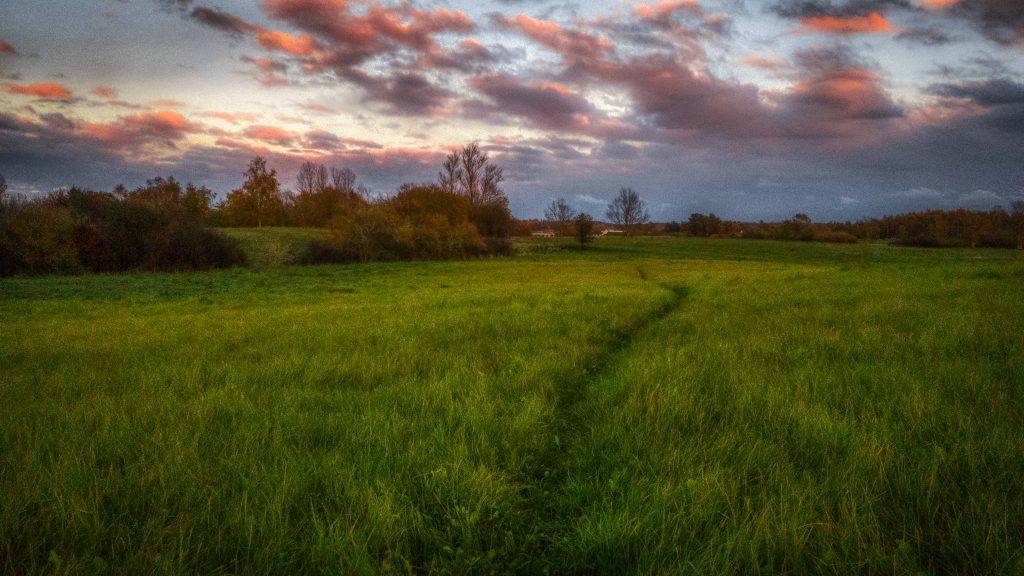
Probably not, but I posted it in the fall after roaming one of my favorite local areas, a piece of beautiful open land with tall grass, scattered trees, bushes and ponds. I have seen rabbits there, and herons. I have walked it in a foot of mud and snow and when the ground split in zig-zag cracks due to drought.
That's all over now. Today it looks like this:
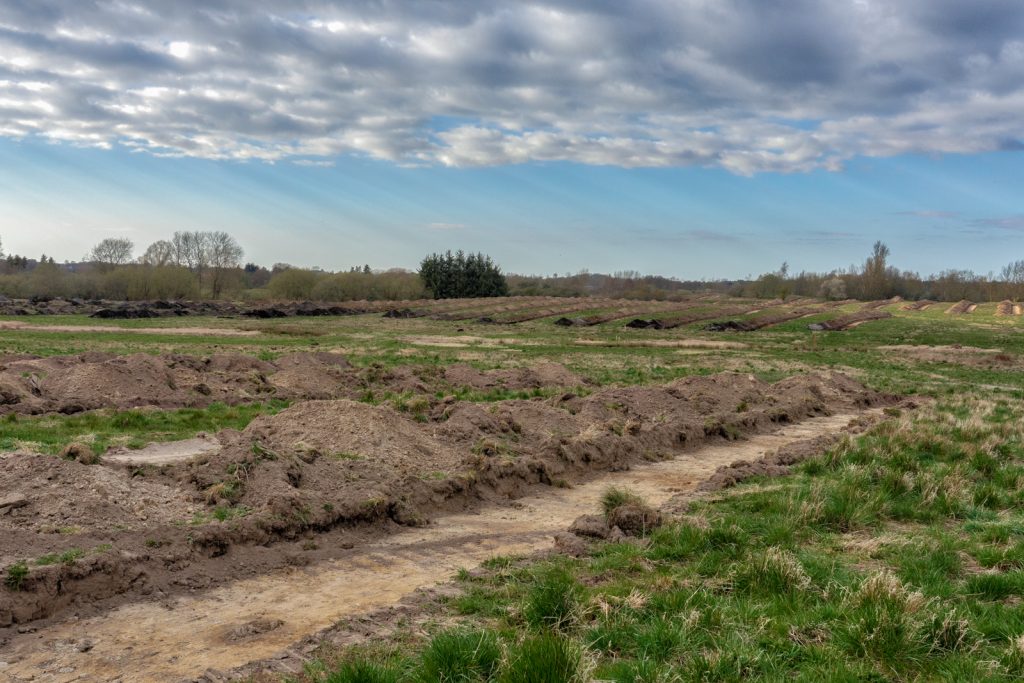
The land is now torn apart by hundreds of dirt piles and ditches like these. Progress is coming. In a year's time this will be a new part of the city, a new residential area for families with children. The rabbits and herons will be displaced and die. The rare piece of open, non-cultivated land will be but a memory.
I just realized all this the other day as I happily walked out there to see if I could put a new spin on this familiar territory with my camera. Sure, I'd seen that they were building a few houses near the road, but I never knew they were about to cover the entire 10 hectares in pavement, bricks, and hedges.
The sight of the destruction of this beautiful area almost made me nauseous. But it wasn't long before this new realization turned into an opportunity. Making my way across and around the newly dug ditches had led me close to the old farm house that struts in the middle of the area. I had always steered in a long circle around the farm house as I didn't want to get yelled at by whoever inhabited the place. Despite the lack of fences and crops, the land I was walking on may very well have been theirs.
But now, having ended up almost in their backyard, something seemed off about the place. I saw broken windows. I saw weeds everywhere. I saw junk randomly tossed on the ground. Holy cow, the the whole thing was abandoned!
Now, if you are not a photographer yourself, you don't know that the word "abandoned" is sweet music in any photographer's ears. Few things are as photogenic as abandoned locations that have been taken over by nature. There is just something about the contrast between human activity and the unrelenting nature that makes for good images.
Fearing a wrecking crew might show up at any minute to level the house, I unfolded my tripod and got to work. This could very well be my only chance to document the old buildings and the soul whose presence I could sense so clearly.
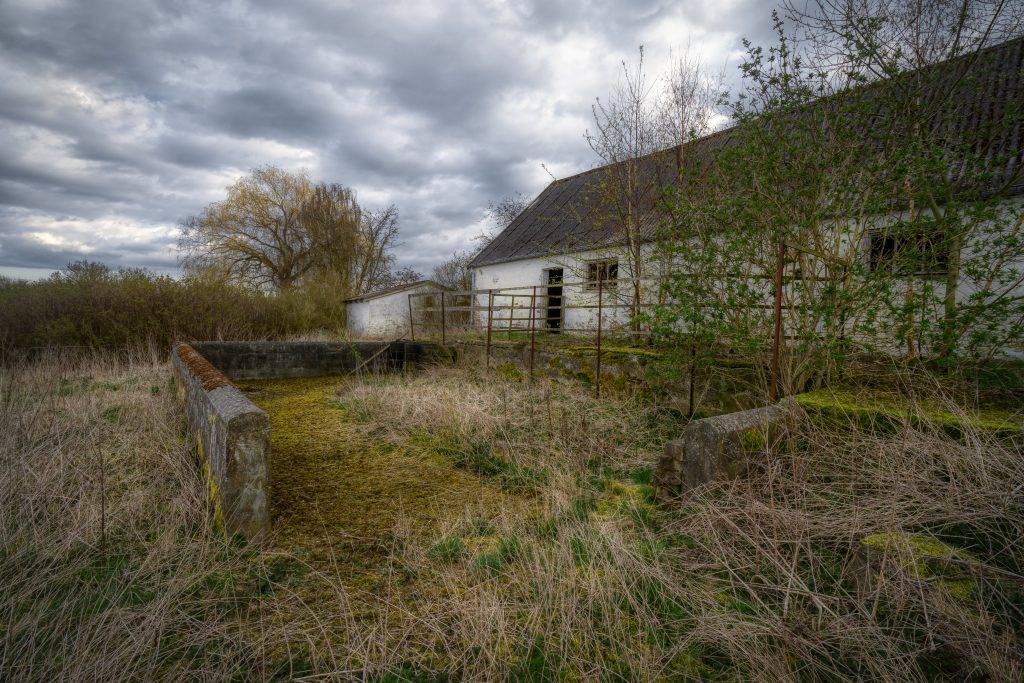
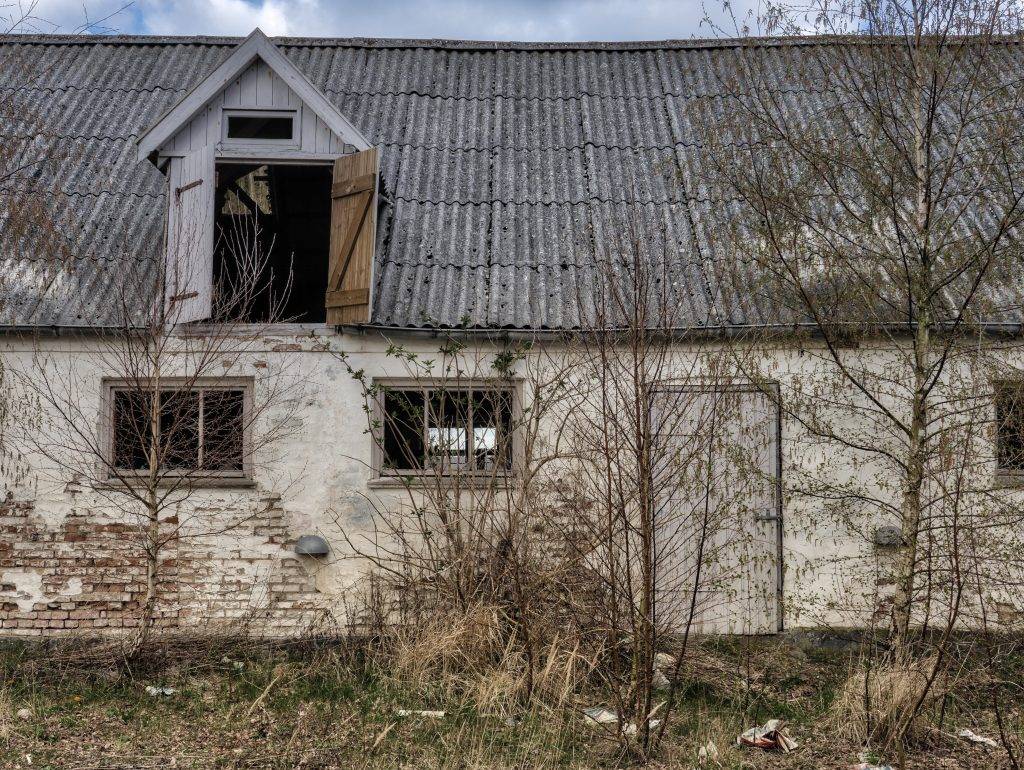
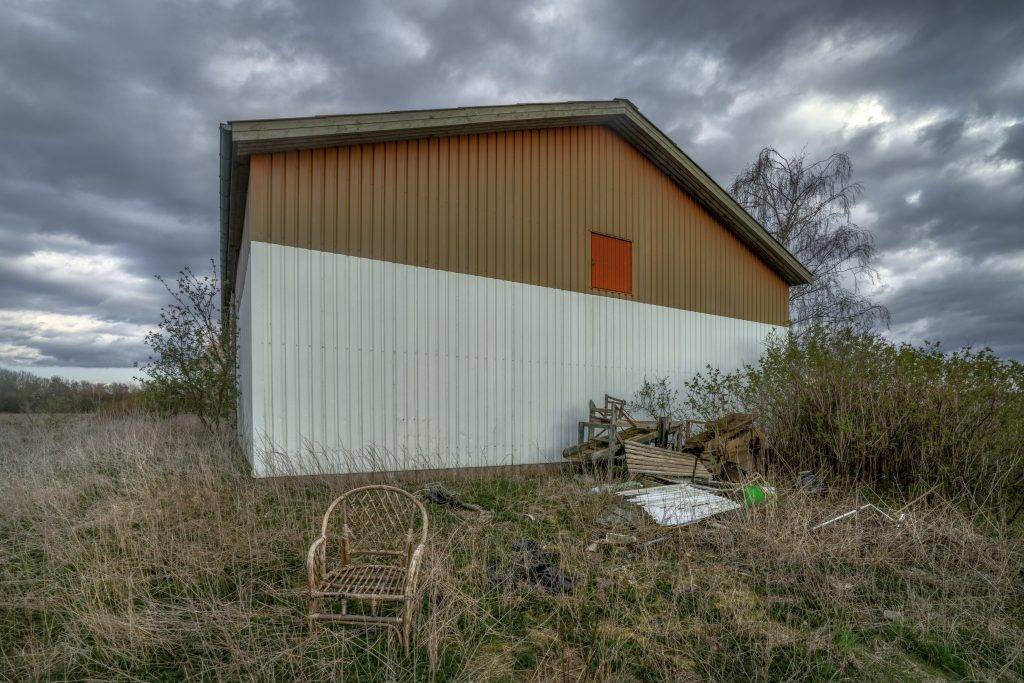
As I circled the house, it became more and more obvious that the farm had been in a state of abandonment and decay for years, possibly a decade or more. The walls were crumpling, trees were growing too close to the buildings. The inside of the stable showed no signs of animals having been present in ages.
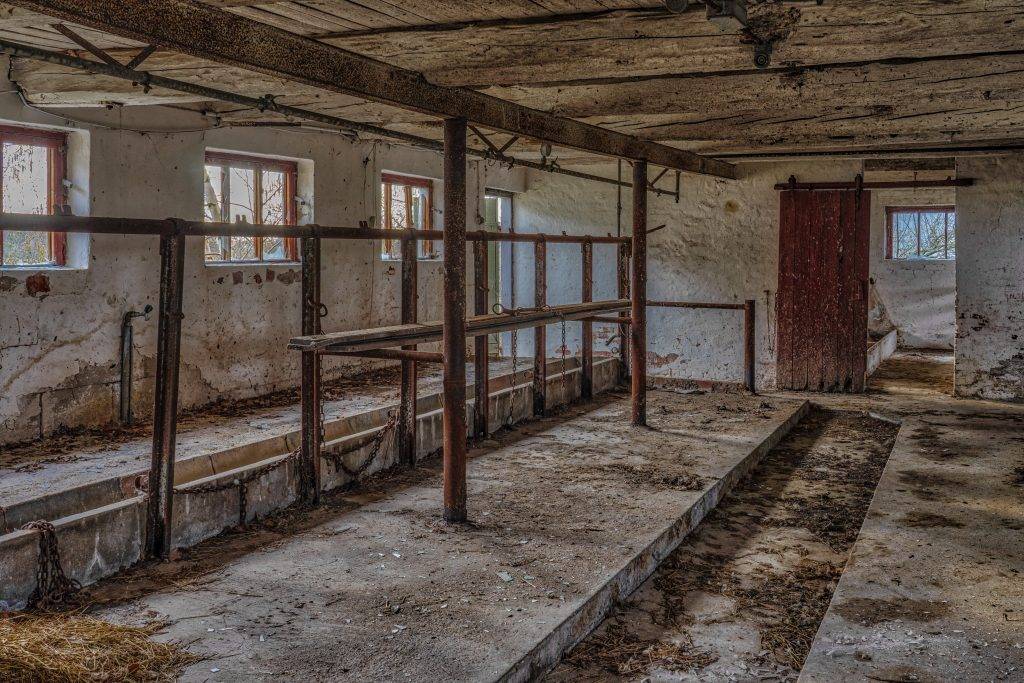
One time, however, I stopped in my tracks. A tricycle - the kind that old people use - was parked in the front yard. Was someone here after all? But no, at closer inspection I could see that there was no air in the tires. It had been sitting there since whoever lived in the house left for the last time.
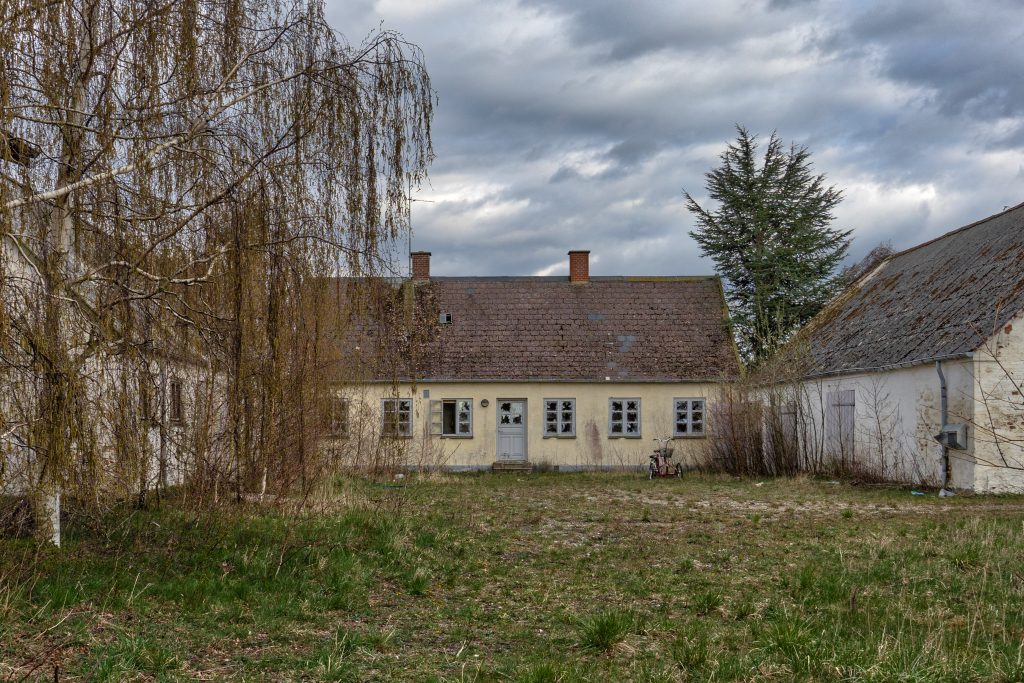
Maybe it was the tricycle, or maybe it was entering the below little backyard that suddenly made me envision life as it may have played out when it still existed here, and what led to its demise. Children running around, eventually growing older, moving away, uninterested in carrying on this farm that may have been in the family for generations. The old farmer and his wife, working the fields and livestock, until one day one of them dropped and could no longer work, leaving the other one lost and with no choice but to move into a retirement home for whatever time was left.
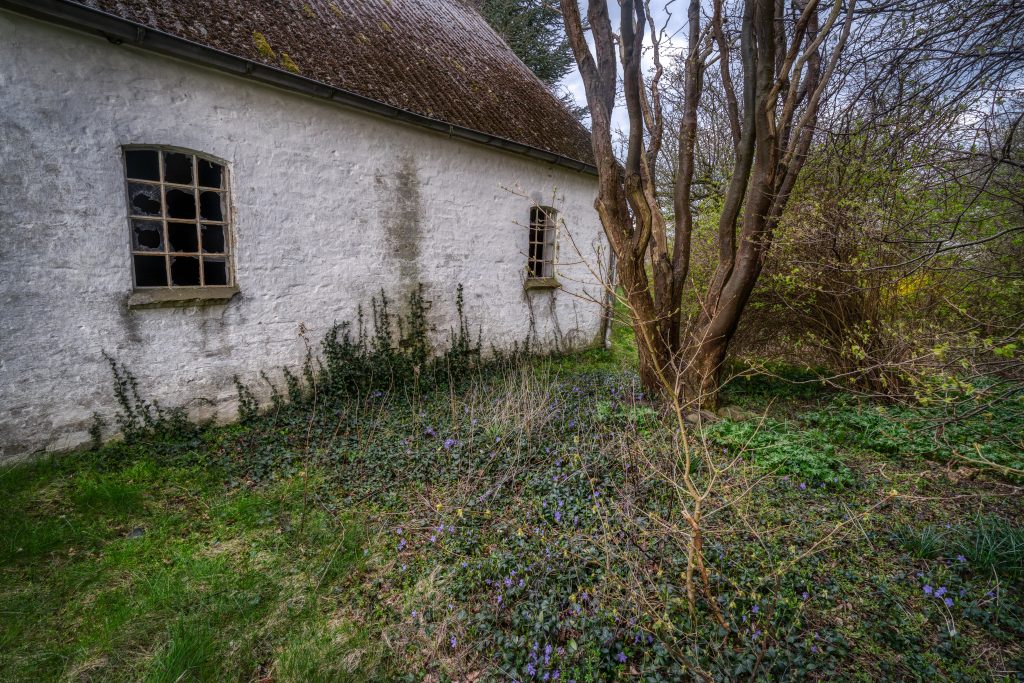
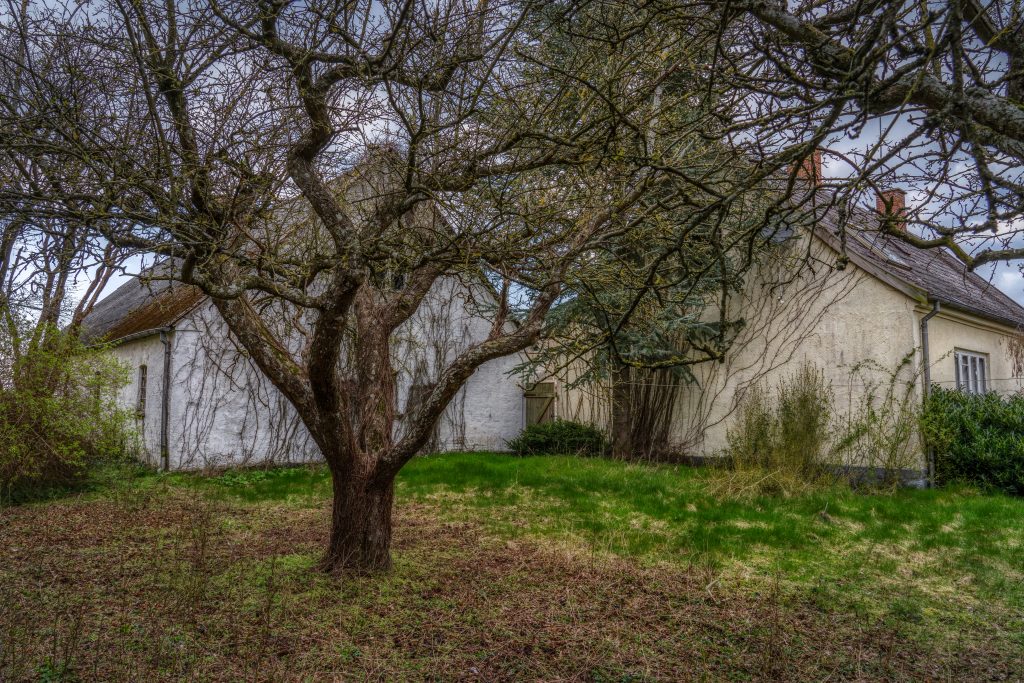
The sun was starting to set, and it was time for me to leave my new discovery behind. As I walked home, the passage of time felt more present than ever before. In less than a week I turn 50 years old. If the speed with which the last 20 years have gone by is any indication - and I fear that it is - the time when whatever traces I'm leaving behind start to fade is in sight. It may not be in shape of a farm, but it will probably be in the shape of what I have created on websites such as this one. And all these images, and thousands more, that no one has ever seen and no one ever will.
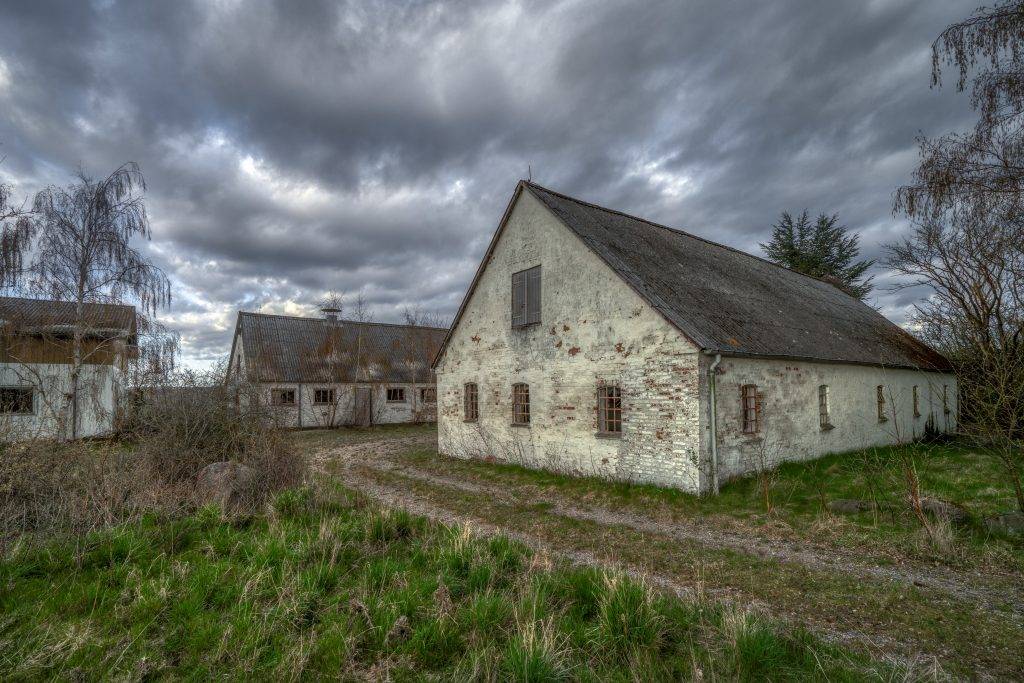
But that's okay. When I got home and told my wife what I had experienced, she said something to the effect of, "Before our house was built, this area was someone else's untouched ground, and they were probably pretty unhappy that new houses were being built."
Her words stuck in my mind. The world is constantly changing. Generations follow generations, and the current generations have no say about the future. We have to accept that the world is only on loan to us. And we just have to make the best of it while we can.
The old farm house will probably be torn down one of these days. The new neighborhood will rise from the ground. I will find new places to shoot my images that few people will ever see. And one day when I'm gone, a server will be turned off and the images, too, will be gone forever.
But somewhere in the world, another middle-aged, overweight amateur photographer will leave his house and go out to shoot his pictures.
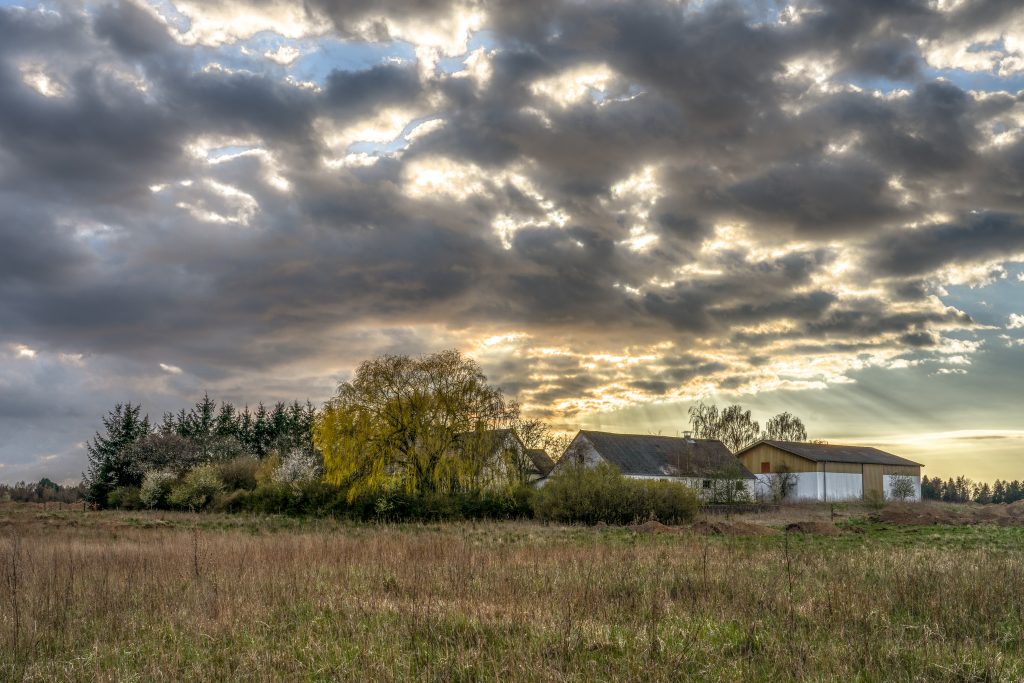
The statement in this post's headline is one that I hear quite often when I show my pictures to people, whether it's family or friends.
Usually, I quickly switch to something else on my phone or computer, or whatever I was using to present my pictures on, and change the subject. Because I know what the next part of their sentence is going to be, if there is one: "but it doesn't look like the real forest/street/beach/sky".
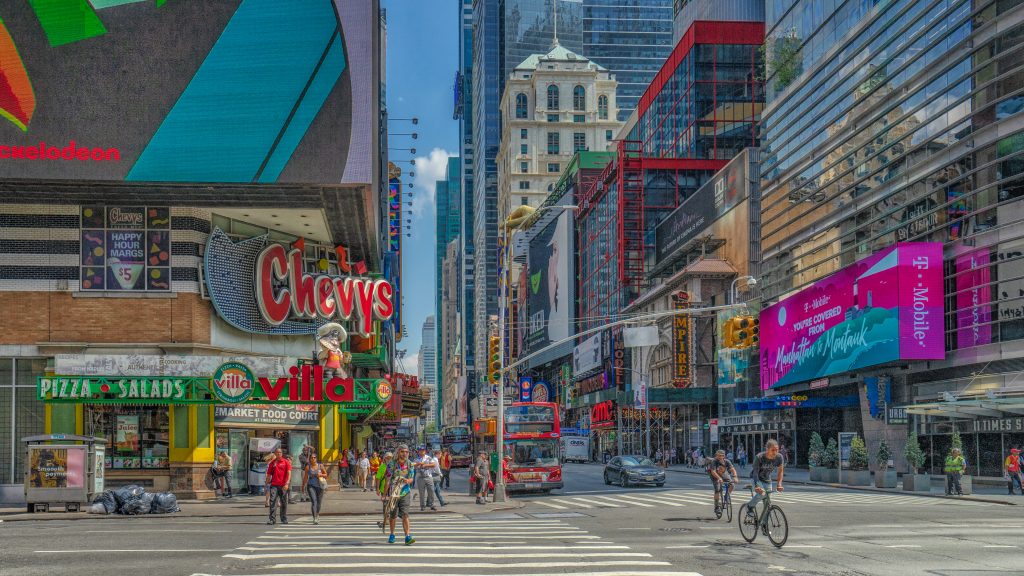
It's never a good thing for an artist to have to explain their art to the viewer. If they don't get it, they don't get it. Not everybody has the same taste. You can't please everyone. Yada yada, yada.... But I can't help feeling that they are missing the point. My objective when creating an image is not for it to exactly resemble what I saw with my eyes, it is for it to resemble what I felt in my heart and soul... and to have the viewer feel that too. If you are not open to letting yourself be emotionally affected, but only look at whether or not it matches what you perceive as "reality", it's your loss.
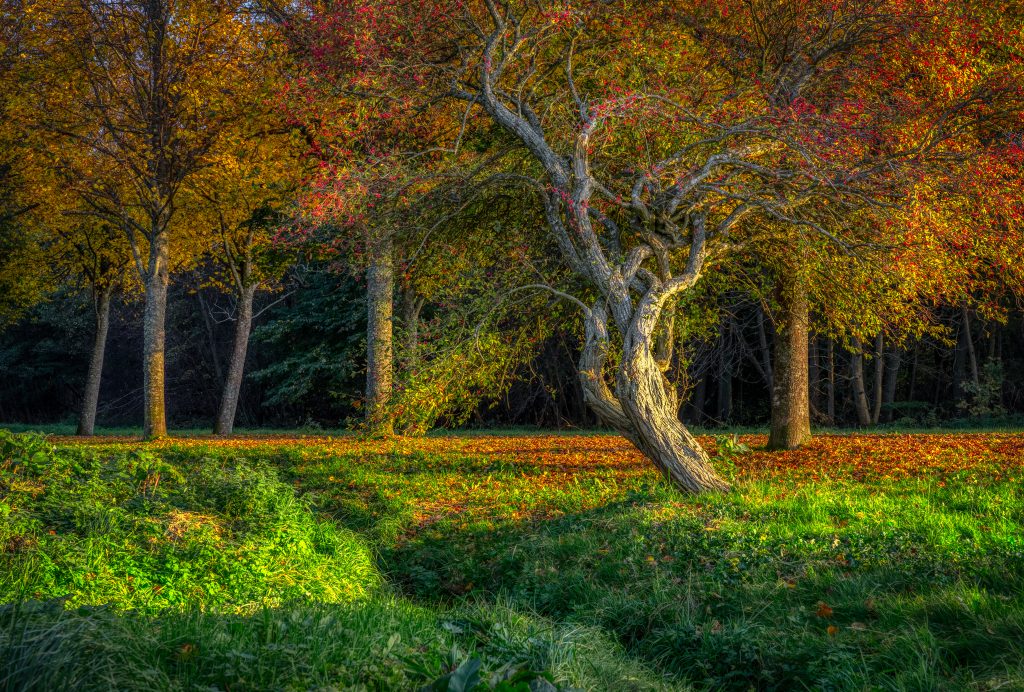
The thing is, if I look at a picture that exactly resembles what I saw with my eyes, it will not affect me in the same way it did when I was in the situation. Why? Because it's a picture! It's not reality. Reality has so much going for it that it becomes an uneven match against an image on a screen or on a wall. Reality has size, it has three dimensions, it has movement, it has sounds and smells, it has the viewer being in the middle of it.
So, in order to compensate for those deficiencies, an image must have something else that reality didn't have, and that's where in some cases additional colors can be a tool. It could also be to add some romantic blur, or make the clouds a little more dramatic than they really were. For instance, if, in the situation, the "scene" felt dramatic, but the image doesn't show it due to its single-dimensional and single-sense qualities, there is nothing wrong with emphasizing the things in the image that at least point in the right direction, such as making clouds grayer and more defined than perhaps they actually were.
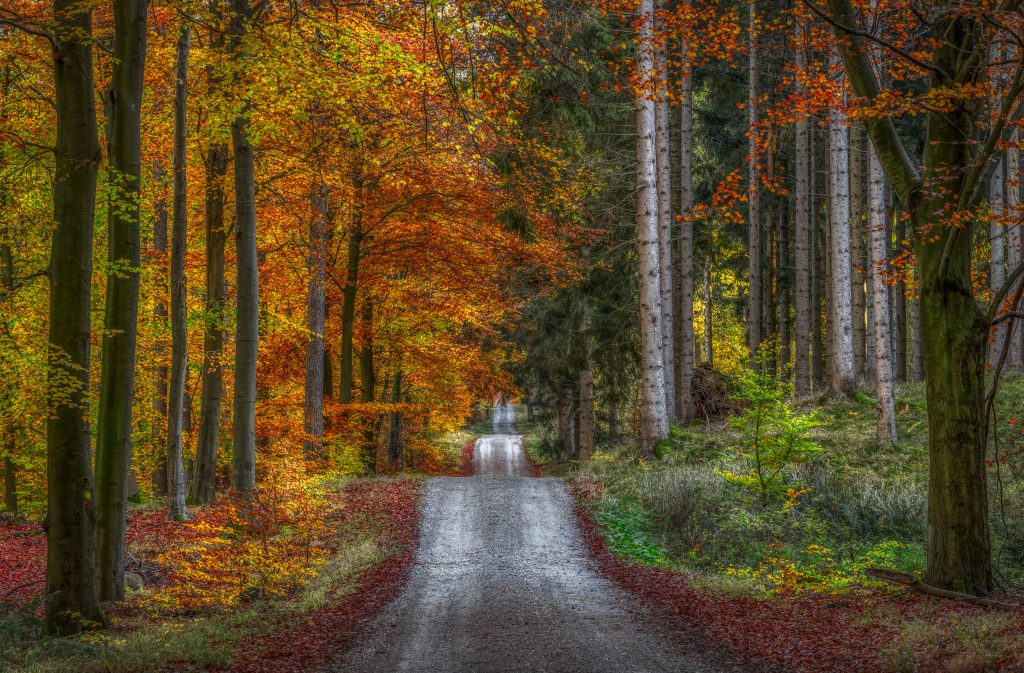
Another point I would like to make is that I actually want to question the so-called reality that many people seem to subscribe to. It seems to me that some people think that an unedited photo, per definition, is closer to reality than one that has been edited. The truth is that one is the camera's interpretation of reality and the other is a human being's interpretation of reality. Do you really think that the camera's interpretation is always more accurate than the human being's who took the picture? Maybe neither one can be completely accurate, but in that case, I will usually find the human being's interpretation more interesting. Of course, a human being can completely ruin a picture with too heavy-handed editing, and I'm sure I have been guilty of that too in the past. Some would say I still am, but I choose to believe that, as I have become more and more conscious of what I want to achieve, it doesn't happen quite as often.
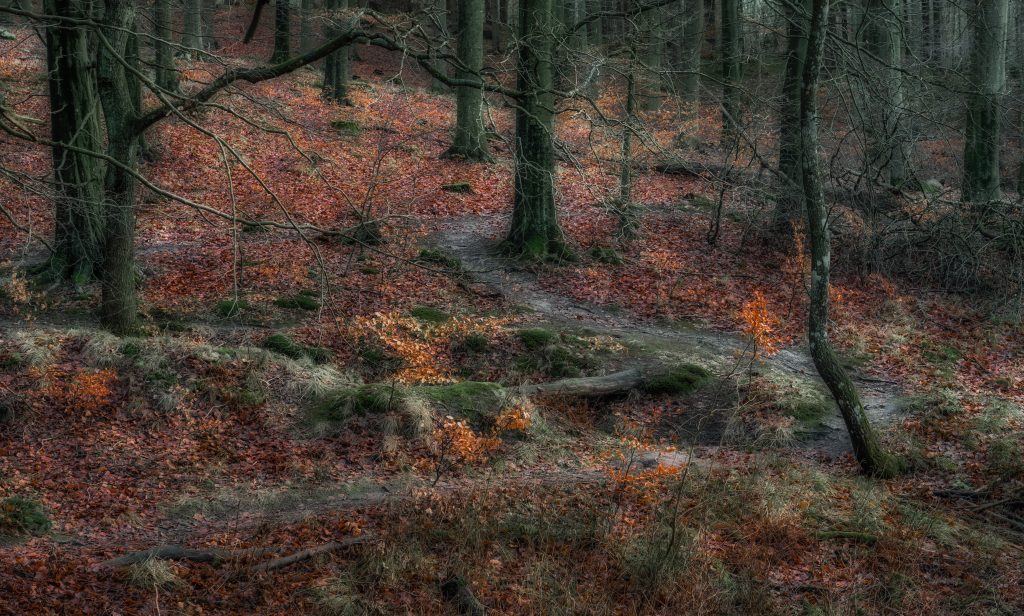
When all is said and done, I can't rule out that I'm just not very good at conveying what I want to convey with my images and that the "but-it-doesn't-look-like-reality"-segment of the population is right. Or that, realistic or not, the same people would totally get the image if I was just better at editing. But I also have received enough awards and love on places like Viewbug and GuruShots that I feel fairly confident that I'm not completely hopeless at what I'm doing.
In the end, I do with my images what I feel is right and what brings up the same feelings in me that I had in the situation. Whether it brings up any - or the right - feelings in anyone else is another matter. All I can do is try and hope that what I do strikes a chord with you.
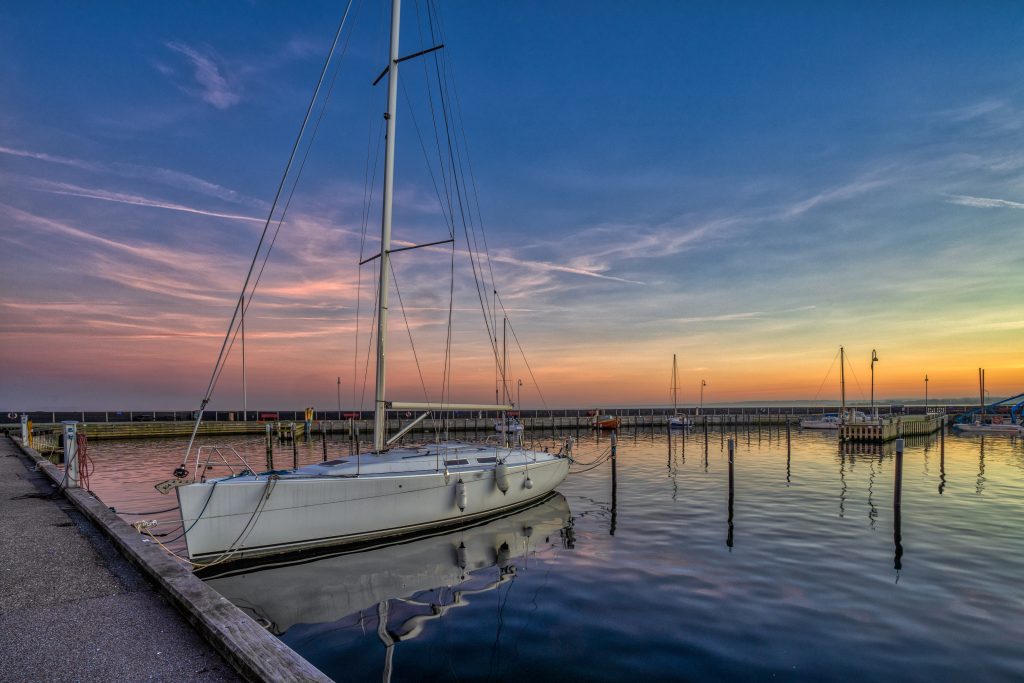
I read somewhere that if you want readers for your photography blog, you need to offer tutorials and practical advice. I haven't done much of that, because as an amateur who struggles with even the most basic skills, I really haven't felt qualified to tell anyone anything about how to go about their photography.
Besides, I have an ambiguous feeling about photography tutorials. Photography is basically "seeing" and then, with your camera, managing to distill what you see into an image. I can't help you with the first part. You have to do your own seeing. If you go into a forest and don't see anything, then forest photography is just not for you. I'm not sure I can help you with the second part either - the distilling. I'm not very conscious about it myself. It just happens, not least in the post-processing phase where I try to emphasize what it was I saw in the situation.
I won't go into the post-processing here, as it would make this post too long. This is all about what you should and should not do while you are out there in the woods with your camera.
But despite my reservations, as the self-proclaimed Denmark's Number One Forest Photographer, it is only fair that I dip my toe into this new territory and offer my completely professionally unfounded, homespun, possibly dangerous, dos and don'ts of forest photography, in no particular order. Yay!
1. Get off the path. You find the best compositions by leaving the path and finding the untouched spots where no one has gone before, let alone with a camera. Sure, your feet will get wet, you will be stung by nettles, but it's worth it.
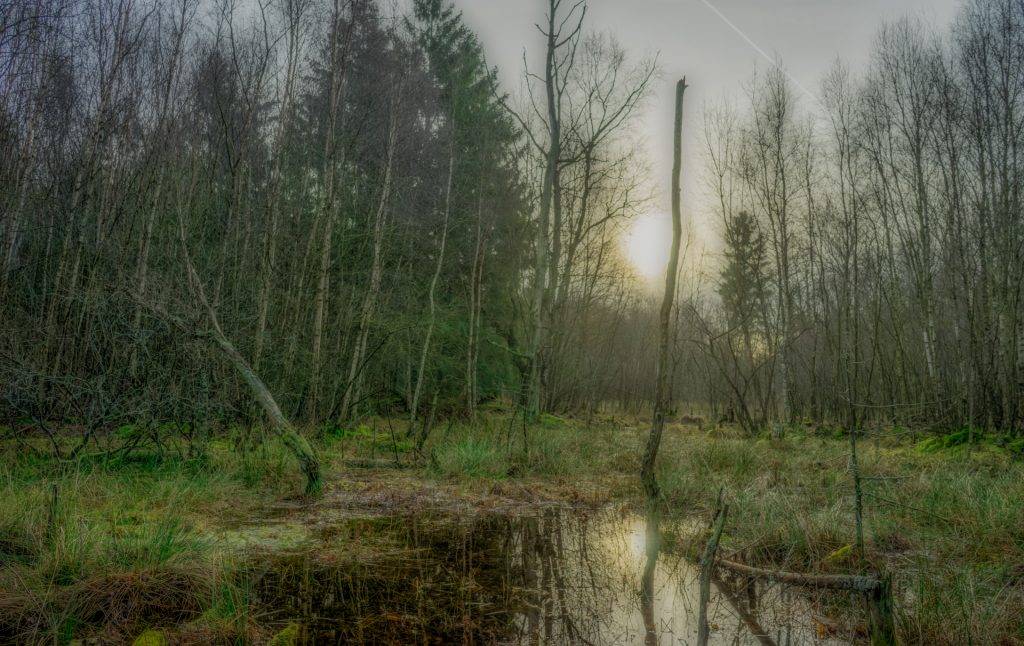
2. If you get off the path, don't wear shorts. Wet feet and nettle stings may be worth it, but being infected by a wood tick could very well not be worth it. And yes, I've tried it and I was fine, but I may just have been lucky.
Don't get eaten by a bear either, if you live in a country with bears.
3. Look for the patterns in your surroundings and then capture what breaks the pattern. Like in the below image, the fallen tree is what makes this image interesting, but it's only interesting because all the other trees constitute a whole.
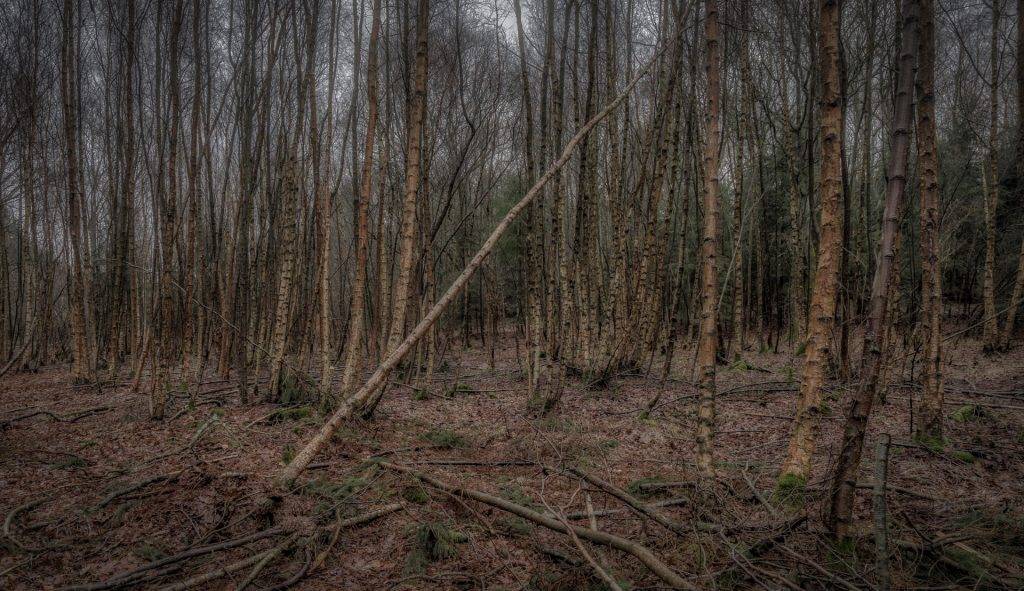
4. Days with clear blue sky are perfect for forest photography. Why? Because that means you will have lots of sunbeams coming through hitting the leaves and trees in gorgeous ways. Besides, clear blue sky doesn't work too well for outside-the-forest landscape photography, so spend those clear days in the woods instead.
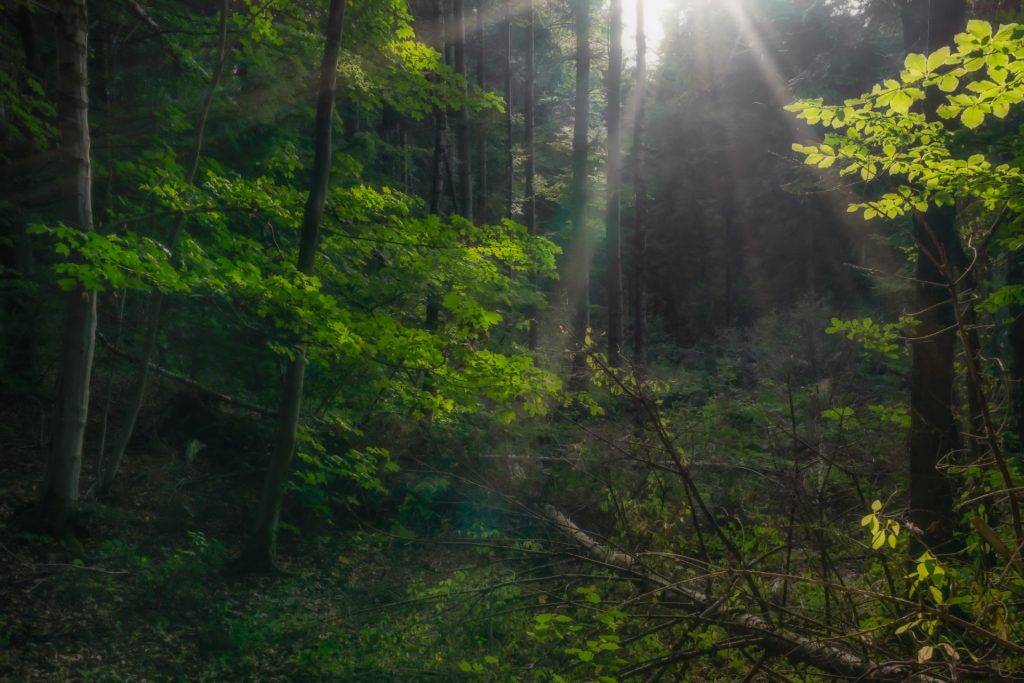
5. Compositions are everywhere! As you walk through the forest, look to your side, look behind you, and look up. The compositions are all around you if you pay attention. I call this one, "The Man in the Tree".
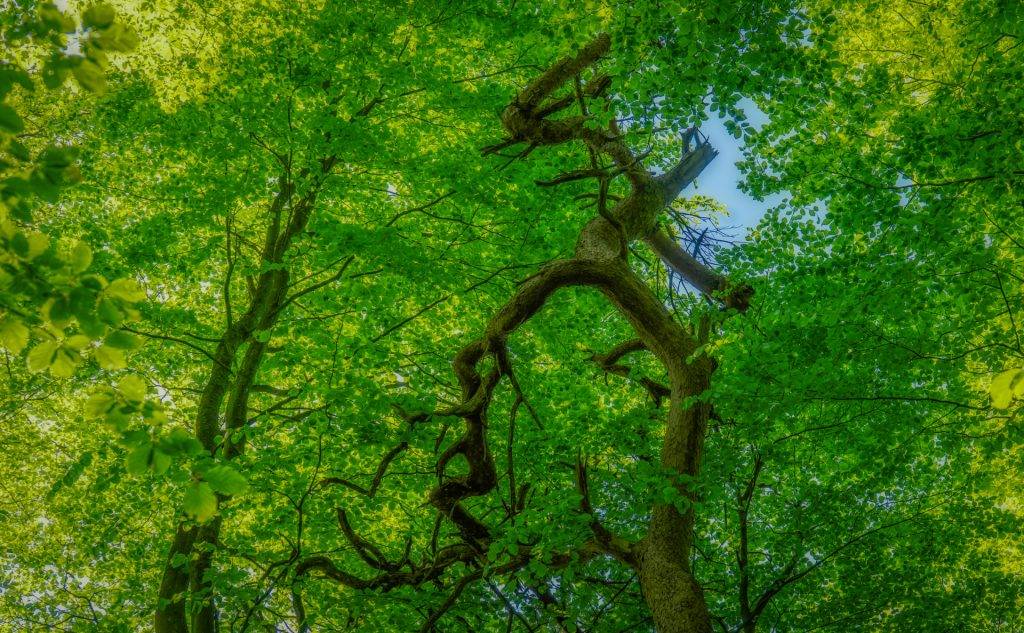
6. There is no bad season for forest photography. They say fall is the best season with the leaves turning orange, yellow, and sometimes even purple, and sure, that may be true, but even in the most dreary, yucky, muddy, gray part of winter, forests have lots to offer. Make a virtue of necessity and capture the dreariness, the yuckiness, the grayness. And notice how completely different the exact same location looks during different seasons.
[ics-comparison-slider id=1]
7. Long exposure photography is good for many things, but be careful when using it in the forest. The least bit of wind in the leaves will make your images blurry at slower shutter speeds. Of course, I can't give you a minimum shutter speed to go by. It depends on how strong the wind is and how much movement in the leaves. Just be aware of it.
8. Use a tripod. Even though I just stated that long-exposures in the forest can be a problem, you are often caught in the dilemma between using a low ISO to avoid noise in the shady parts and keeping exposure times down enough to avoid blur in the leaves. Forests are by definition relatively dark places, and as a result, don't expect to be able to use really fast shutter speeds either. Handheld photography may be possible on bright days in the forest, but usually the result is noticeably better when you use a tripod. Besides, because forests form a pretty good windshield, there will be days that are completely still where exposures of several seconds will come out just fine.
9. As you leave the path, try to make your way downhill. Eventually you will come across water in the shape of little creeks or tiny forest lakes. Water = reflections, reflections = good.
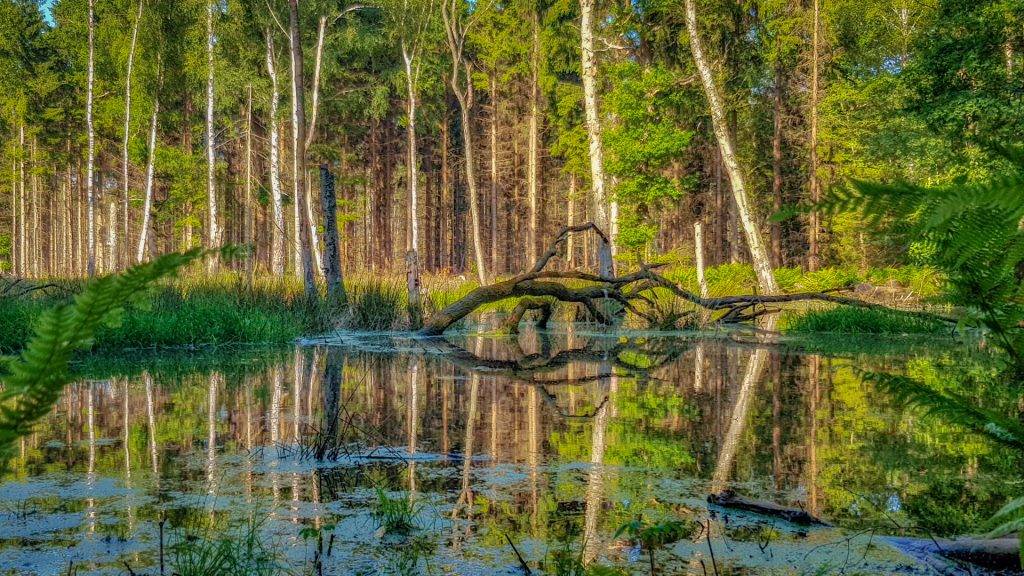
10. A tree is not just a tree. The forest consists of tons of trees, and sure, most of them are rather indistinct and non-photogenic. But keep your eyes open and you will see exceptionally beautiful trees that just stand out among all the others. Grab them.
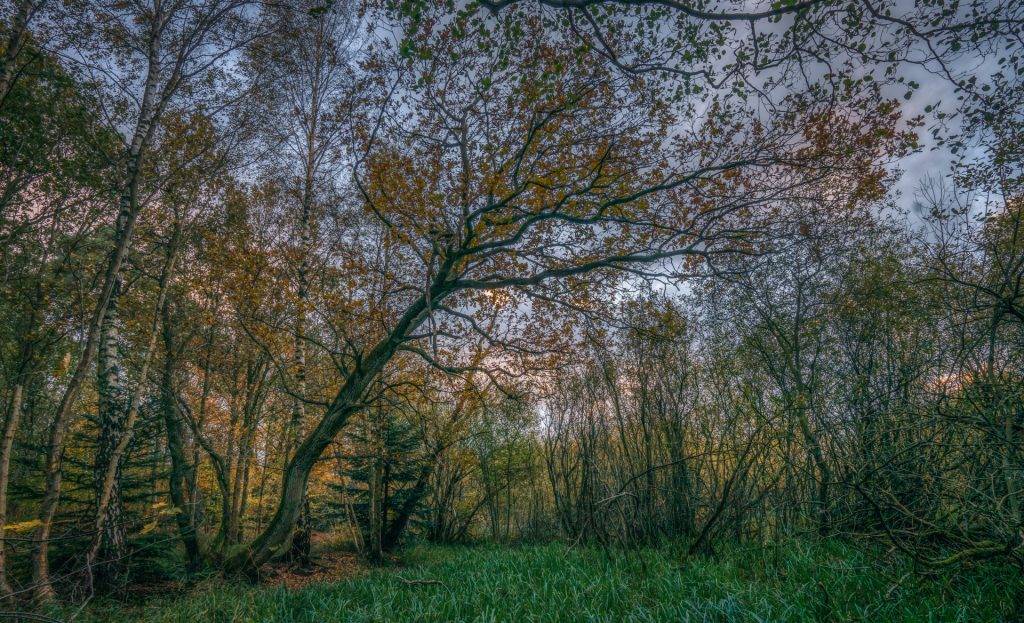
11. Some trees are worth more dead than alive! For some reason gray, leafless and lifeless trees make for great photography subjects. This image is the only one not from Denmark, but from Idaho. I called it "The Ghost".
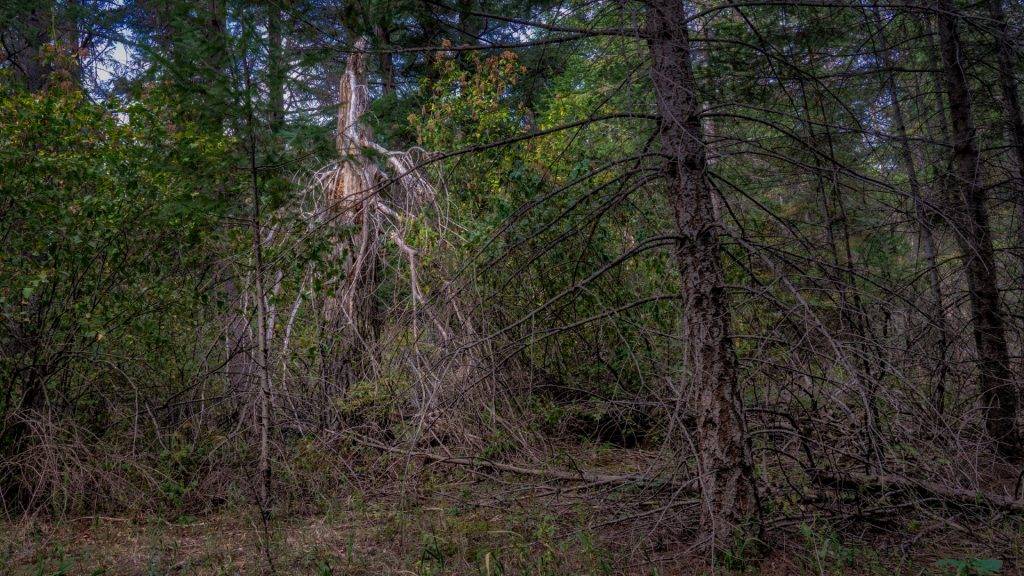
12. You don't have to go deep into a forest to find the best compositions. The edge of the forest, or an edge to a clearing or a lake in the forest, are gold in forest photography. That's where the light is at its best and where you can find interesting contrasts and focus points.
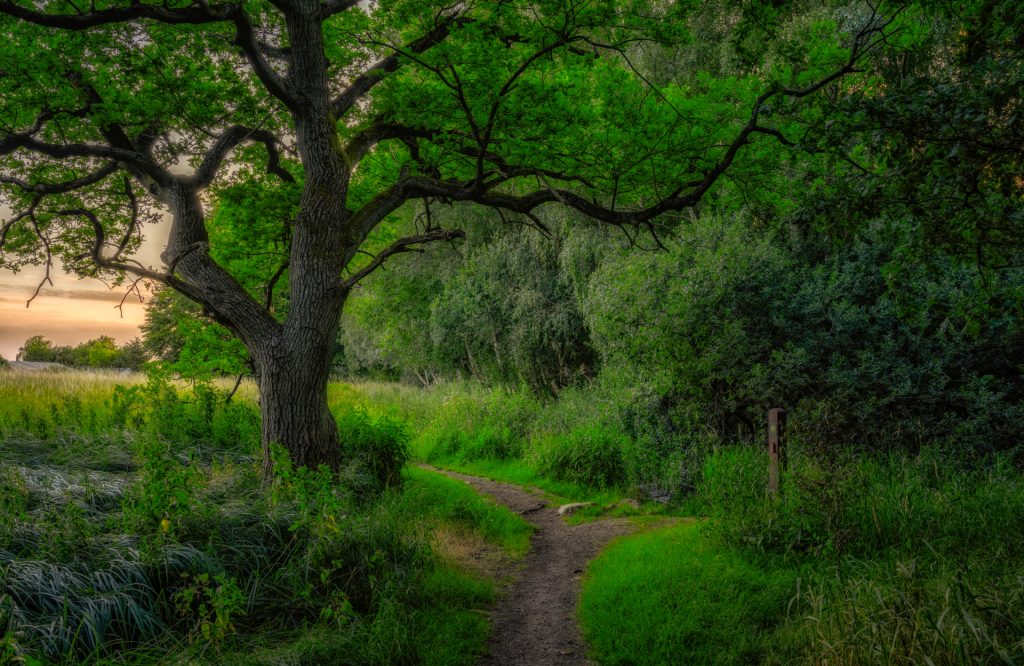
So those were my best tips for forest photography. Since I mostly operate in Danish deciduous forests, I can't guarantee things work quite the same way in other types of forest in other parts of the world. What I'm certain goes for all forests is that they provide an endless array of opportunities for photographers if you keep your eyes open and are not afraid of straying from the beaten path.